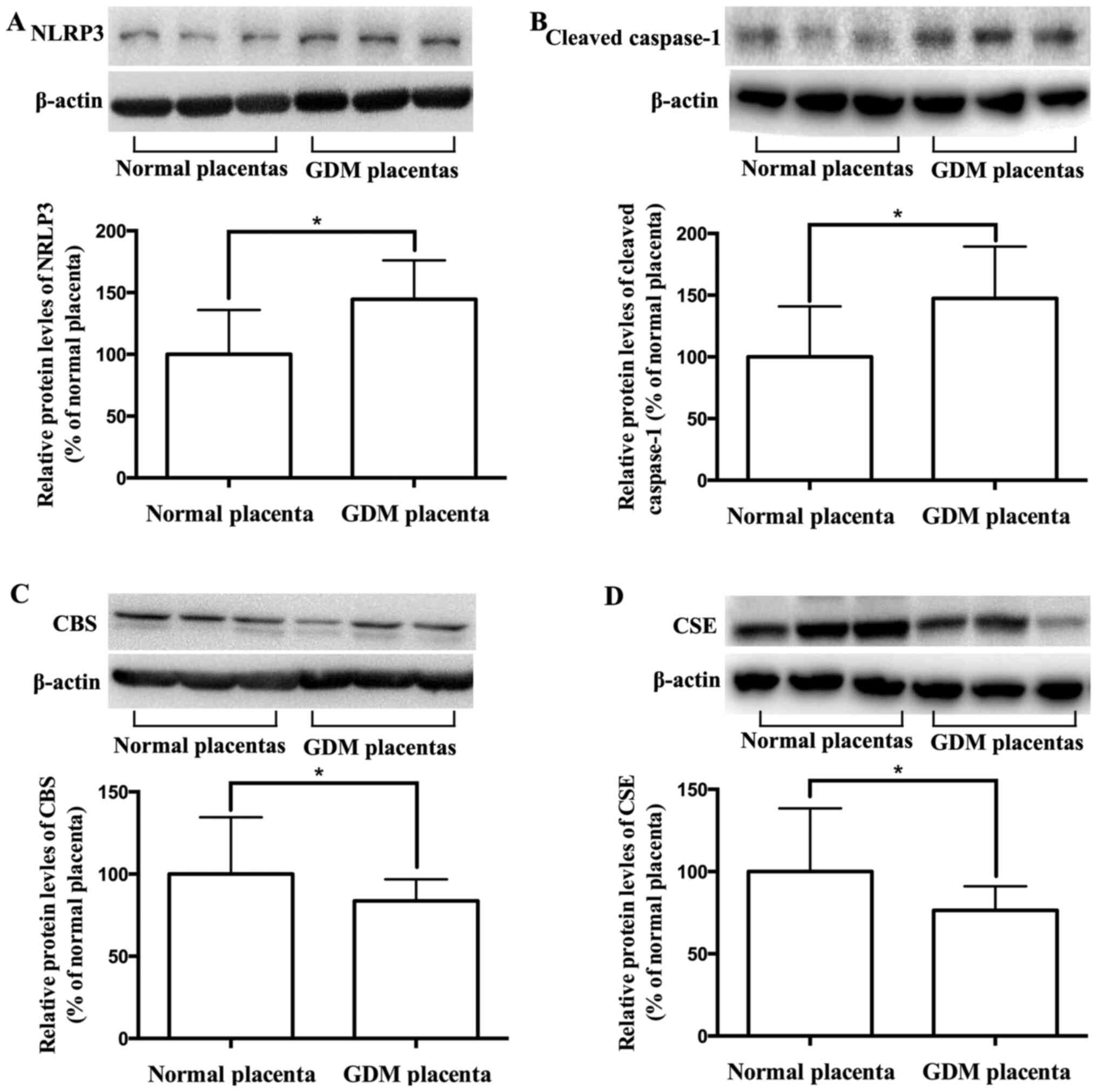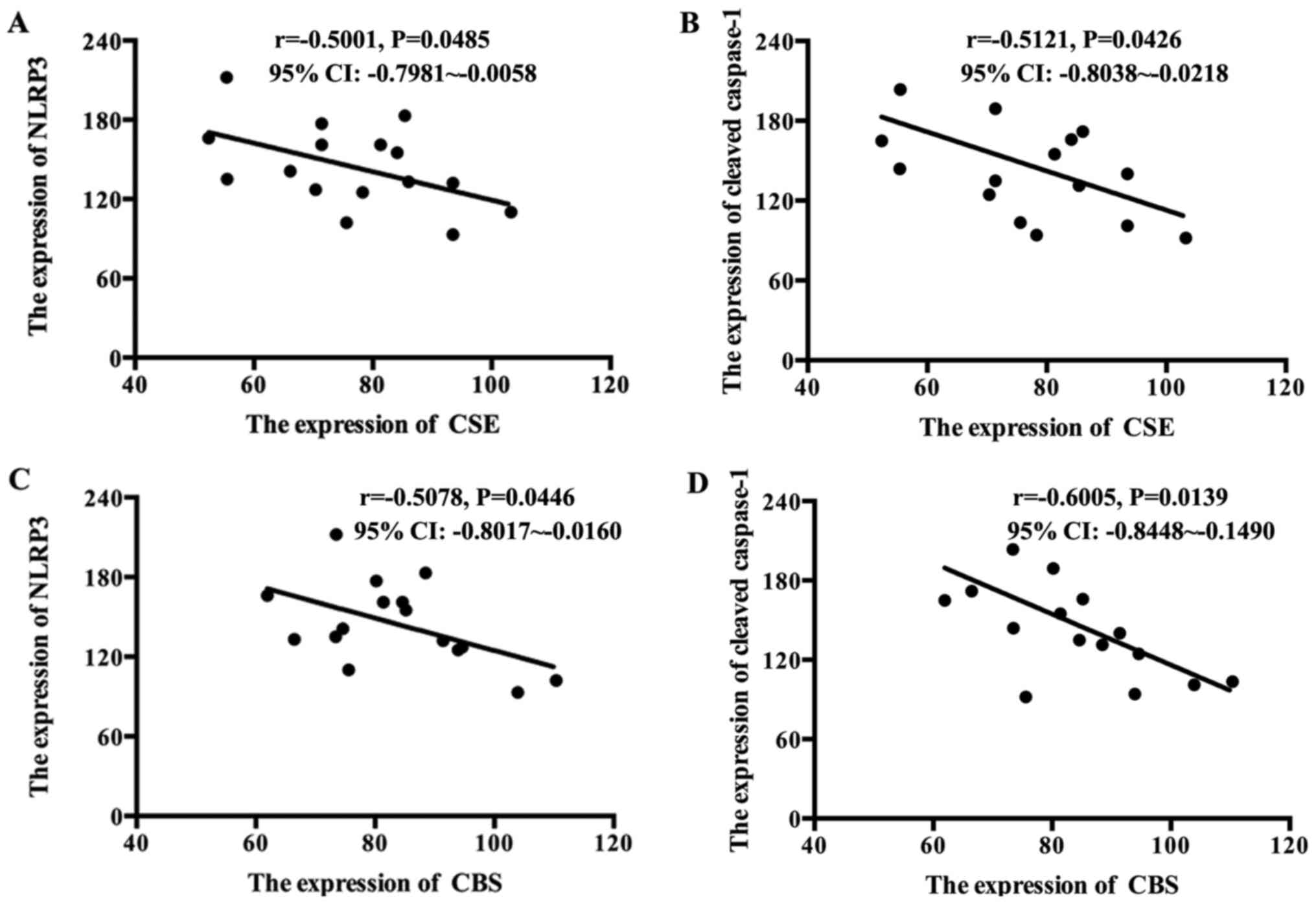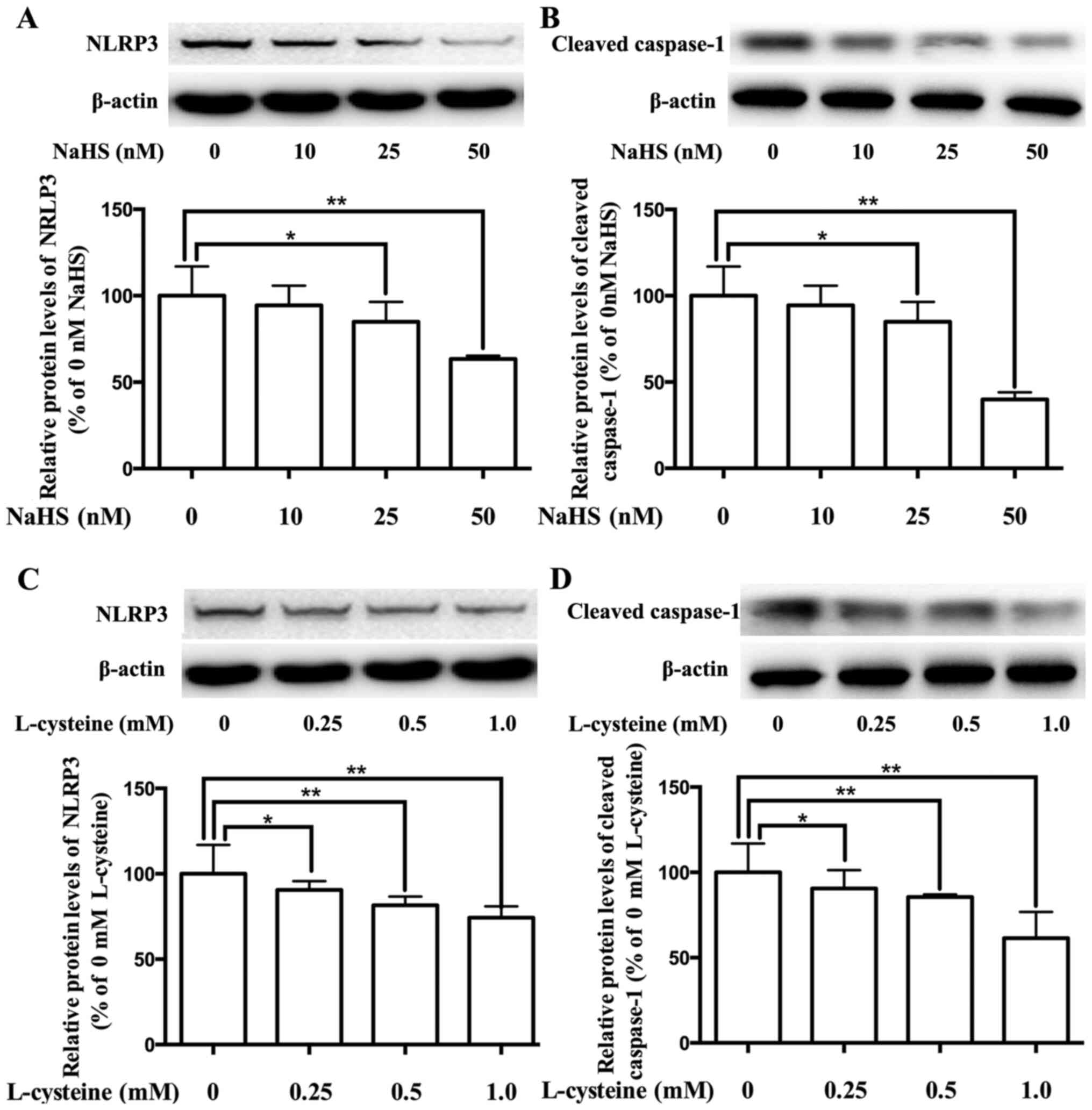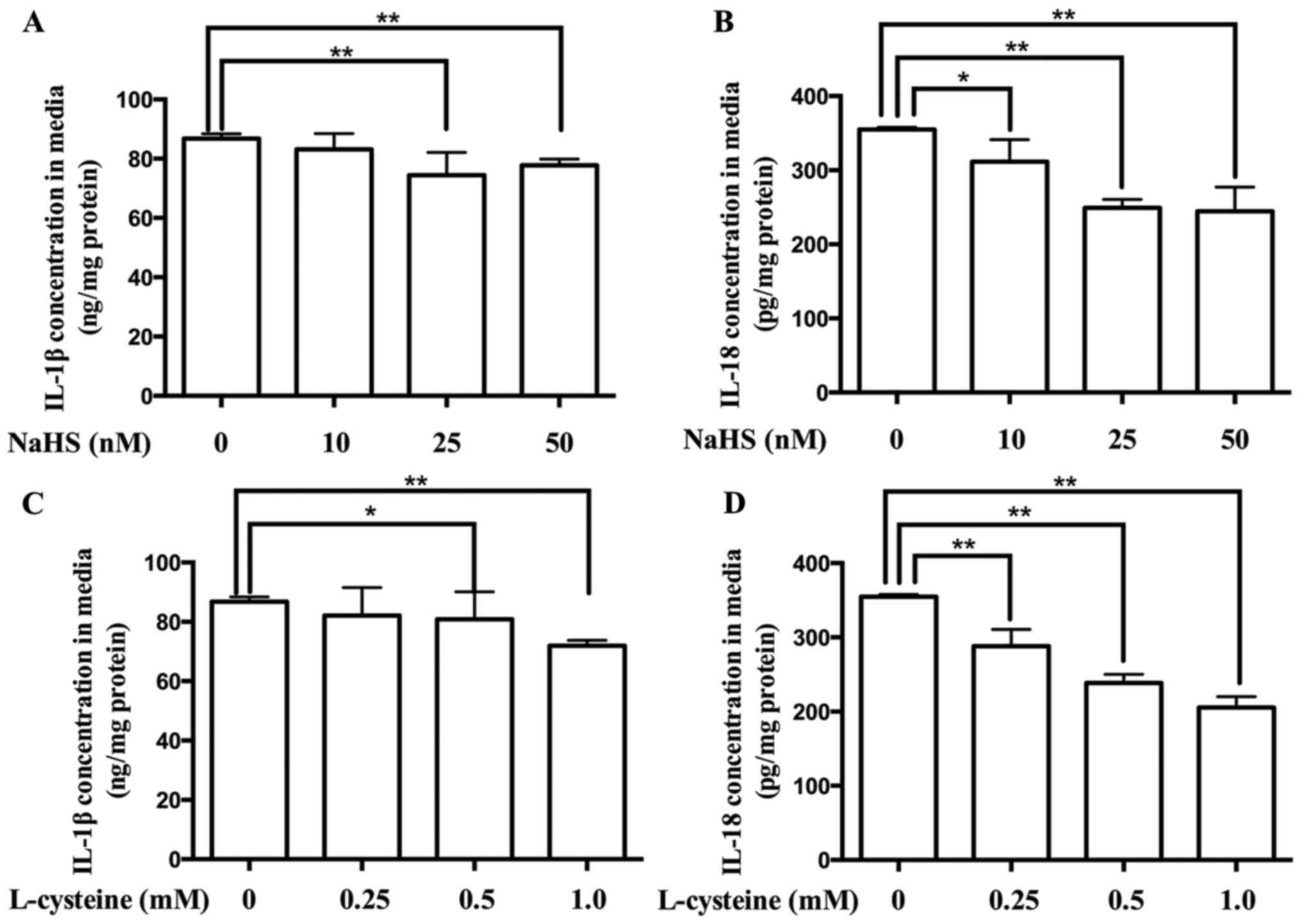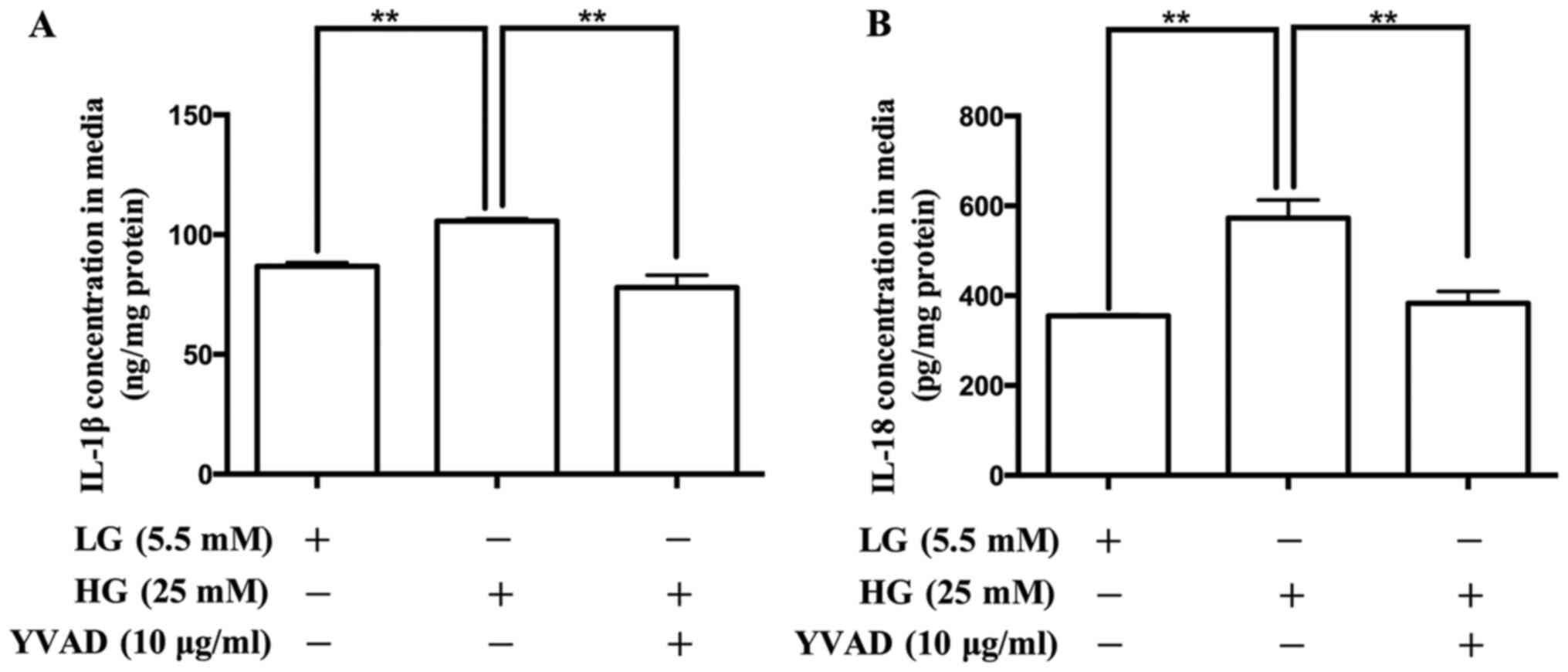|
1
|
Catalano PM: Trying to understand
gestational diabetes. Diabet Med. 31:273–281. 2014.PubMed/NCBI View Article : Google Scholar
|
|
2
|
Yan B, Yu Y, Lin M, Li Z, Wang L, Huang P,
Song H, Shi X, Yang S, Li X, et al: High, but stable, trend in the
prevalence of gestational diabetes mellitus: A population-based
study in Xiamen, China. J Diabetes Investig. 10:1358–1364.
2019.PubMed/NCBI View Article : Google Scholar
|
|
3
|
Wang M, Hu RY, Gong WW, Pan J, Fei FR,
Wang H, Zhou XY, Zhong JM and Yu M: Trends in prevalence of
gestational diabetes mellitus in Zhejiang Province, China,
2016-2018. Nutr Metab (Lond). 18(12)2021.PubMed/NCBI View Article : Google Scholar
|
|
4
|
Gualdani E, Di Cianni G, Seghieri M,
Francesconi P and Seghieri G: Pregnancy outcomes and maternal
characteristics in women with pregestational and gestational
diabetes: A retrospective study on 206,917 singleton live births.
Acta Diabetol. 58:1169–1176. 2021.PubMed/NCBI View Article : Google Scholar
|
|
5
|
de Sousa RAL, de Lima EV, da Silva TP, de
Souza RV, Figueiredo CP, Passos GF and Clarke JR: Late Cognitive
Consequences of Gestational Diabetes to the Offspring, in a New
Mouse Model. Mol Neurobiol. 56:7754–7764. 2019.PubMed/NCBI View Article : Google Scholar
|
|
6
|
Kajantie E, Osmond C and Eriksson JG:
Gestational hypertension is associated with increased risk of type
2 diabetes in adult offspring: the Helsinki Birth Cohort Study. Am
J Obstet Gynecol. 216:281 e281–281 e287. 2017.PubMed/NCBI View Article : Google Scholar
|
|
7
|
Cinkajzlová A, Anderlová K, Šimják P,
Lacinová Z, Kloučková J, Kratochvílová H, Krejčí H, Pařízek A, Mráz
M, Kršek M, et al: Subclinical Inflammation and Adipose Tissue
Lymphocytes in Pregnant Females With Gestational Diabetes Mellitus.
J Clin Endocrinol Metab. 105(dgaa528)2020.PubMed/NCBI View Article : Google Scholar
|
|
8
|
Olmos-Ortiz A, Flores-Espinosa P, Díaz L,
Velázquez P, Ramírez-Isarraraz C and Zaga-Clavellina V:
Immunoendocrine Dysregulation during Gestational Diabetes Mellitus:
The Central Role of the Placenta. Int J Mol Sci.
22(8087)2021.PubMed/NCBI View Article : Google Scholar
|
|
9
|
Rancourt RC, Ott R, Ziska T, Schellong K,
Melchior K, Henrich W and Plagemann A: Visceral Adipose Tissue
Inflammatory Factors (TNF-Alpha, SOCS3) in Gestational Diabetes
(GDM): Epigenetics as a Clue in GDM Pathophysiology. Int J Mol Sci.
21(479)2020.PubMed/NCBI View Article : Google Scholar
|
|
10
|
Keckstein S, Pritz S, Amann N, Meister S,
Beyer S, Jegen M, Kuhn C, Hutter S, Knabl J, Mahner S, et al: Sex
Specific Expression of Interleukin 7, 8 and 15 in Placentas of
Women with Gestational Diabetes. Int J Mol Sci.
21(8026)2020.PubMed/NCBI View Article : Google Scholar
|
|
11
|
Tsiotra PC, Halvatsiotis P, Patsouras K,
Maratou E, Salamalekis G, Raptis SA, Dimitriadis G and Boutati E:
Circulating adipokines and mRNA expression in adipose tissue and
the placenta in women with gestational diabetes mellitus. Peptides.
101:157–166. 2018.PubMed/NCBI View Article : Google Scholar
|
|
12
|
Simpson S, Smith L and Bowe J: Placental
peptides regulating islet adaptation to pregnancy: Clinical
potential in gestational diabetes mellitus. Curr Opin Pharmacol.
43:59–65. 2018.PubMed/NCBI View Article : Google Scholar
|
|
13
|
Hill DJ: Placental control of metabolic
adaptations in the mother for an optimal pregnancy outcome. What
goes wrong in gestational diabetes? Placenta. 69:162–168.
2018.PubMed/NCBI View Article : Google Scholar
|
|
14
|
Ngala RA, Fondjo LA, Gmagna P, Ghartey FN
and Awe MA: Placental peptides metabolism and maternal factors as
predictors of risk of gestational diabetes in pregnant women. A
case-control study. PLoS One. 12(e0181613)2017.PubMed/NCBI View Article : Google Scholar
|
|
15
|
Skajaa GO, Fuglsang J, Knorr S, Møller N,
Ovesen P and Kampmann U: Changes in insulin sensitivity and insulin
secretion during pregnancy and post partum in women with
gestational diabetes. BMJ Open Diabetes Res Care.
8(e001728)2020.PubMed/NCBI View Article : Google Scholar
|
|
16
|
Waters TP, Kim SY, Sharma AJ, Schnellinger
P, Bobo JK, Woodruff RT, Cubbins LA, Haghiac M, Minium J, Presley
L, et al: Longitudinal changes in glucose metabolism in women with
gestational diabetes, from late pregnancy to the postpartum period.
Diabetologia. 63:385–394. 2020.PubMed/NCBI View Article : Google Scholar
|
|
17
|
Liu T, Deng JM, Liu YL, Chang L and Jiang
YM: The relationship between gestational diabetes mellitus and
interleukin 1beta gene polymorphisms in southwest of China.
Medicine (Baltimore). 99(e22679)2020.PubMed/NCBI View Article : Google Scholar
|
|
18
|
Fatima SS, Alam F, Chaudhry B and Khan TA:
Elevated levels of chemerin, leptin, and interleukin-18 in
gestational diabetes mellitus. J Matern Fetal Neonatal Med.
30:1023–1028. 2017.PubMed/NCBI View Article : Google Scholar
|
|
19
|
Gomes CP, Torloni MR, Gueuvoghlanian-Silva
BY, Alexandre SM, Mattar R and Daher S: Cytokine levels in
gestational diabetes mellitus: A systematic review of the
literature. Am J Reprod Immunol. 69:545–557. 2013.PubMed/NCBI View Article : Google Scholar
|
|
20
|
Schulze F, Wehner J, Kratschmar DV,
Makshana V, Meier DT, Häuselmann SP, Dalmas E, Thienel C, Dror E,
Wiedemann SJ, et al: Inhibition of IL-1beta improves Glycaemia in a
Mouse Model for Gestational Diabetes. Sci Rep.
10(3035)2020.PubMed/NCBI View Article : Google Scholar
|
|
21
|
Zhou F, Li C and Zhang SY: NLRP3
inflammasome: A new therapeutic target for high-risk reproductive
disorders? Chin Med J (Engl). 134:20–27. 2020.PubMed/NCBI View Article : Google Scholar
|
|
22
|
Fang X, Wang Y, Zhang Y, Li Y, Kwak-Kim J
and Wu L: NLRP3 Inflammasome and Its Critical Role in Gynecological
Disorders and Obstetrical Complications. Front Immunol.
11(555826)2021.PubMed/NCBI View Article : Google Scholar
|
|
23
|
Gora IM, Ciechanowska A and Ladyzynski P:
NLRP3 Inflammasome at the Interface of Inflammation, Endothelial
Dysfunction, and Type 2 Diabetes. Cells. 10(10)2021.PubMed/NCBI View Article : Google Scholar
|
|
24
|
Yu ZW, Zhang J, Li X, Wang Y, Fu YH and
Gao XY: A new research hot spot: The role of NLRP3 inflammasome
activation, a key step in pyroptosis, in diabetes and diabetic
complications. Life Sci. 240(117138)2020.PubMed/NCBI View Article : Google Scholar
|
|
25
|
Mastrocola R, Aragno M, Alloatti G,
Collino M, Penna C and Pagliaro P: Metaflammation: Tissue-Specific
Alterations of the NLRP3 Inflammasome Platform in Metabolic
Syndrome. Curr Med Chem. 25:1294–1310. 2018.PubMed/NCBI View Article : Google Scholar
|
|
26
|
Zhang R, Zhang X, Xing B, Zhao J, Zhang P,
Shi D and Yang F: Astragaloside IV attenuates gestational diabetes
mellitus via targeting NLRP3 inflammasome in genetic mice. Reprod
Biol Endocrinol. 17(77)2019.PubMed/NCBI View Article : Google Scholar
|
|
27
|
Chen CQ, Xin H and Zhu YZ: Hydrogen
sulfide: Third gaseous transmitter, but with great pharmacological
potential. Acta Pharmacol Sin. 28:1709–1716. 2007.PubMed/NCBI View Article : Google Scholar
|
|
28
|
Tang C, Li X and Du J: Hydrogen sulfide as
a new endogenous gaseous transmitter in the cardiovascular system.
Curr Vasc Pharmacol. 4:17–22. 2006.PubMed/NCBI View Article : Google Scholar
|
|
29
|
Hu TX, Zhang NN, Ruan Y, Tan QY and Wang
J: Hydrogen sulfide modulates high glucose-induced NLRP3
inflammasome activation in 3T3-L1 adipocytes. Exp Ther Med.
19:771–776. 2020.PubMed/NCBI View Article : Google Scholar
|
|
30
|
Teng Y, Xuan S, Jiang M, Tian L, Tian J
and Chang Q: Expression of H2S in Gestational Diabetes
Mellitus and Correlation Analysis with Inflammatory Markers IL-6
and TNF-α. J Diabetes Res. 2020(3085840)2020.PubMed/NCBI View Article : Google Scholar
|
|
31
|
Renga B: Hydrogen sulfide generation in
mammals: The molecular biology of cystathionine-β- synthase (CBS)
and cystathionine-γ-lyase (CSE). Inflamm Allergy Drug Targets.
10:85–91. 2011.PubMed/NCBI View Article : Google Scholar
|
|
32
|
Hu T, Wang G, Zhu Z, Huang Y, Gu H and Ni
X: Increased ADAM10 expression in preeclamptic placentas is
associated with decreased expression of hydrogen sulfide production
enzymes. Placenta. 36:947–950. 2015.PubMed/NCBI View Article : Google Scholar
|
|
33
|
Sun Q, Chen Z, He P, Li Y, Ding X, Huang
Y, Gu H and Ni X: Reduced Expression of Hydrogen Sulfide-Generating
Enzymes Down-Regulates 15-Hydroxyprostaglandin Dehydrogenase in
Chorion during Term and Preterm Labor. Am J Pathol. 188:63–71.
2018.PubMed/NCBI View Article : Google Scholar
|
|
34
|
Lu L, Kingdom J, Burton GJ and
Cindrova-Davies T: Placental Stem Villus Arterial Remodeling
Associated with Reduced Hydrogen Sulfide Synthesis Contributes to
Human Fetal Growth Restriction. Am J Pathol. 187:908–920.
2017.PubMed/NCBI View Article : Google Scholar
|
|
35
|
Ganguly E, Hula N, Spaans F, Cooke CM,
Davidge ST and Ganguly E: Placenta-targeted treatment strategies:
An opportunity to impact fetal development and improve offspring
health later in life. Pharmacol Res. 157(104836)2020.PubMed/NCBI View Article : Google Scholar
|
|
36
|
Tsai K, Tullis B, Jensen T, Graff T,
Reynolds P and Arroyo J: Differential expression of mTOR related
molecules in the placenta from gestational diabetes mellitus (GDM),
intrauterine growth restriction (IUGR) and preeclampsia patients.
Reprod Biol. 21(100503)2021.PubMed/NCBI View Article : Google Scholar
|
|
37
|
Awamleh Z, Butcher DT, Hanley A,
Retnakaran R, Haertle L, Haaf T, Hamilton J and Weksberg R:
Exposure to Gestational Diabetes Mellitus (GDM) alters DNA
methylation in placenta and fetal cord blood. Diabetes Res Clin
Pract. 174(108690)2021.PubMed/NCBI View Article : Google Scholar
|
|
38
|
Sarina Li DF, Feng ZQ, Du J, Zhao WH,
Huang N, Jia JC, Wu ZY, Alamusi Wang YY, Ji XL and Yu L: Mechanism
of Placenta Damage in Gestational Diabetes Mellitus by
Investigating TXNIP of Patient Samples and Gene Functional Research
in Cell Line. Diabetes Ther. 10:2265–2288. 2019.PubMed/NCBI View Article : Google Scholar
|
|
39
|
Dinarello CA: Overview of the IL-1 family
in innate inflammation and acquired immunity. Immunol Rev.
281:8–27. 2018.PubMed/NCBI View Article : Google Scholar
|
|
40
|
Ballak DB, Stienstra R, Tack CJ, Dinarello
CA and van Diepen JA: IL-1 family members in the pathogenesis and
treatment of metabolic disease: Focus on adipose tissue
inflammation and insulin resistance. Cytokine. 75:280–290.
2015.PubMed/NCBI View Article : Google Scholar
|
|
41
|
Zochio GP, Possomato-Vieira JS, Chimini
JS, da Silva MLS and Dias-Junior CA: Effects of fast versus
slow-releasing hydrogen sulfide donors in hypertension in pregnancy
and fetoplacental growth restriction. Naunyn Schmiedebergs Arch
Pharmacol. 392:1561–1568. 2019.PubMed/NCBI View Article : Google Scholar
|
|
42
|
You X, Chen Z, Zhao H, Xu C, Liu W, Sun Q,
He P, Gu H and Ni X: Endogenous hydrogen sulfide contributes to
uterine quiescence during pregnancy. Reproduction. 153:535–543.
2017.PubMed/NCBI View Article : Google Scholar
|
|
43
|
Jia Q, Mehmood S, Liu X, Ma S and Yang R:
Hydrogen sulfide mitigates myocardial inflammation by inhibiting
nucleotide-binding oligomerization domain-like receptor protein 3
inflammasome activation in diabetic rats. Exp Biol Med (Maywood).
245:221–230. 2020.PubMed/NCBI View Article : Google Scholar
|
|
44
|
Zheng Q, Pan L and Ji Y: H 2S protects
against diabetes-accelerated atherosclerosis by preventing the
activation of NLRP3 inflammasome. J Biomed Res. 34:94–102.
2019.PubMed/NCBI View Article : Google Scholar
|
|
45
|
Su Y, Wang Y, Liu M and Chen H: Hydrogen
sulfide attenuates renal I/R-induced activation of the inflammatory
response and apoptosis via regulating Nrf2-mediated NLRP3 signaling
pathway inhibition. Mol Med Rep. 24(518)2021.PubMed/NCBI View Article : Google Scholar
|
|
46
|
Nguyen TTP, Kim DY, Lee YG, Lee YS, Truong
XT, Lee JH, Song DK, Kwon TK, Park SH, Jung CH, et al: SREBP-1c
impairs ULK1 sulfhydration-mediated autophagic flux to promote
hepatic steatosis in high-fat-diet-fed mice. Mol Cell.
81:3820–3832.e7. 2021.PubMed/NCBI View Article : Google Scholar
|
|
47
|
Peh MT, Anwar AB, Ng DS, Atan MS, Kumar SD
and Moore PK: Effect of feeding a high fat diet on hydrogen sulfide
(H2S) metabolism in the mouse. Nitric Oxide. 41:138–145.
2014.PubMed/NCBI View Article : Google Scholar
|
|
48
|
Moreira AM, Grisote SA, Francescato HDC,
Coimbra TM, Elias LLK, Antunes-Rodrigues J and Ruginsk SG: Effects
of endogenous H2S production inhibition on the
homeostatic responses induced by acute high-salt diet consumption.
Mol Cell Biochem. 476:715–725. 2021.PubMed/NCBI View Article : Google Scholar
|
|
49
|
Zheng W and Liu C: The cystathionine
γ-lyase/hydrogen sulfide pathway mediates the trimetazidine-induced
protection of H9c2 cells against hypoxia/reoxygenation-induced
apoptosis and oxidative stress. Anatol J Cardiol. 22:102–111.
2019.PubMed/NCBI View Article : Google Scholar
|
|
50
|
Bibli SI and Fleming I: Oxidative
Post-Translational Modifications: A Focus on Cysteine
S-Sulfhydration and the Regulation of Endothelial Fitness. Antioxid
Redox Signal: Sep 29, 2021 (Epub ahead of print). doi:
10.1089/ars.2021.0162.
|
|
51
|
Manna P and Jain SK: Vitamin D
up-regulates glucose transporter 4 (GLUT4) translocation and
glucose utilization mediated by cystathionine-γ-lyase (CSE)
activation and H2S formation in 3T3L1 adipocytes. J Biol
Chem. 287:42324–42332. 2012.PubMed/NCBI View Article : Google Scholar
|
|
52
|
Brown J, Alwan NA, West J, Brown S,
McKinlay CJ, Farrar D and Crowther CA: Lifestyle interventions for
the treatment of women with gestational diabetes. Cochrane Database
Syst Rev. 5(CD011970)2017.PubMed/NCBI View Article : Google Scholar
|
|
53
|
Jiang XC, Liang ZD, Chen DL, Jia JP, Hu JR
and Hu L: Correlation of Homocysteine, AHSG, CRP with Insulin
Resistance, 25-(OH)2-VitD, Blood Lipids in Gestational Diabetes
Patients. Clin Lab. 67(67)2021.PubMed/NCBI View Article : Google Scholar
|
|
54
|
Chen W, Li Y, Gao B, Li J, Zheng M and
Chen X: Serum 25-hydroxyvitamin D levels in relation to lipids and
clinical outcomes in pregnant women with gestational diabetes
mellitus: An observational cohort study. BMJ Open.
10(e039905)2020.PubMed/NCBI View Article : Google Scholar
|
|
55
|
Akarsu S, Bagirzade M, Omeroglu S and Büke
B: Placental vascularization and apoptosis in Type-1 and
gestational DM. J Matern Fetal Neonatal Med. 30:1045–1050.
2017.PubMed/NCBI View Article : Google Scholar
|
|
56
|
Kasture V, Sahay A and Joshi S: Cell death
mechanisms and their roles in pregnancy related disorders. Adv
Protein Chem Struct Biol. 126:195–225. 2021.PubMed/NCBI View Article : Google Scholar
|















